In the realm of feline care, the necessity of collars and ID tags for indoor cats is a topic often overlooked. While it may seem unnecessary for cats that spend the majority of their time indoors, unforeseen circumstances can quickly turn a safe environment into a potential risk.
The importance of these seemingly simple accessories becomes apparent in situations where a cat's safety and well-being hang in the balance. By exploring the reasons behind why collars and ID tags are essential for indoor cats, a deeper understanding of their significance emerges.
Key Takeaways
- Indoor cats can still get lost, emphasizing the need for collars and ID tags.
- ID tags help reunite lost cats with owners and signal ownership to strangers.
- Collars with ID tags are vital for quick identification, especially in emergencies.
- Owners should update ID tags regularly with current information for maximum effectiveness.
Importance of Collars & ID Tags
The significance of collars and ID tags for cats, even those kept indoors, cannot be underestimated in ensuring their safety and swift return in case of unexpected events. While indoor cats may seem safe from outdoor dangers, unforeseen circumstances like natural disasters or home invasions can lead to their escape or displacement. Owners often overlook the importance of collars and ID tags until faced with an emergency, but these simple accessories play a crucial role in signaling ownership to strangers and aiding in the identification process at shelters.
Reasons Indoor Cats Need ID Tags
Indoor cats, despite being kept safe within the confines of a home, can greatly benefit from wearing ID tags for unforeseen situations that may lead to their escape or separation from their owners. Even though indoor cats are not exposed to the same risks as outdoor cats, accidents like doors left open, natural disasters, or human errors can result in them getting lost.
In these instances, ID tags play a crucial role in helping strangers identify a lost cat and facilitating a quick reunion with their owner. Without ID tags, shelters may struggle to reunite lost indoor cats with their families. Therefore, having identification on indoor cats can provide an added layer of protection and ensure their safe return home.
Overlooking Collar Importance
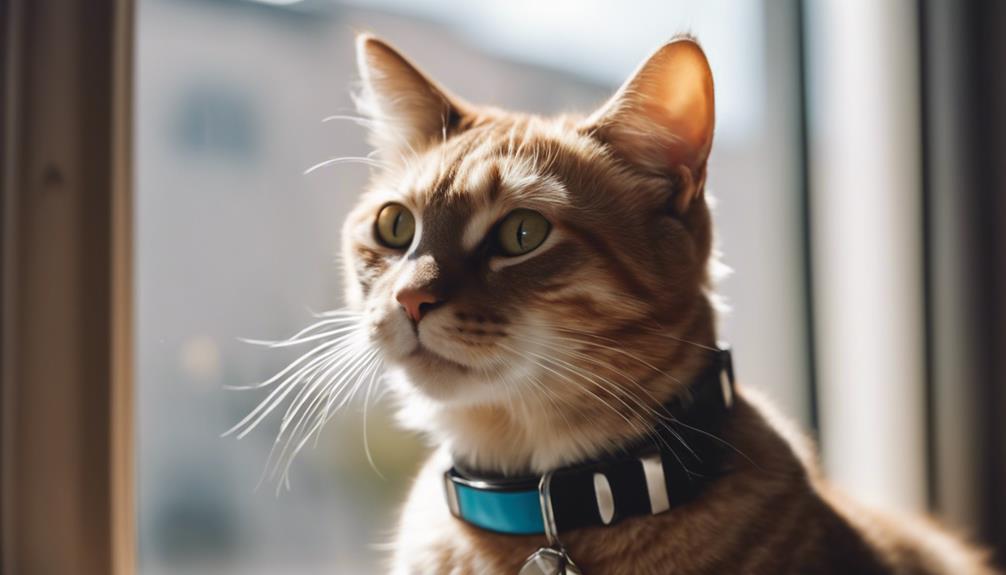
Despite the potential lifesaving benefits, the significance of collars for indoor cats is often underestimated until a critical situation arises. Many indoor cat owners assume their feline companions are safe from harm indoors, leading them to overlook the importance of collars.
However, unforeseen events like natural disasters or accidental escapes can put indoor cats at risk. Collars not only serve as a means of identification but also provide a way for strangers to easily recognize that a lost cat has a home.
Signaling Ownership With ID Tags
Owners of indoor cats often underestimate the importance of collars, but ID tags play a crucial role in signaling ownership and ensuring a swift return if a pet goes missing. An ID tag provides vital information to strangers who may find your lost cat, increasing the chances of a safe return. Here is an example of what you can include on your cat's ID tag:
| Information | Example |
|---|---|
| Owner's Name | Sarah Johnson |
| Phone Number 1 | (555) 123-4567 |
| Phone Number 2 | (555) 987-6543 |
| Address/City | 1234 Meadow Lane, Anytown |
| Medical Information | Allergic to penicillin |
Remember to keep your cat's ID tag updated with current information to ensure a successful reunion in case your furry friend gets lost.
Shelter Identification Struggles
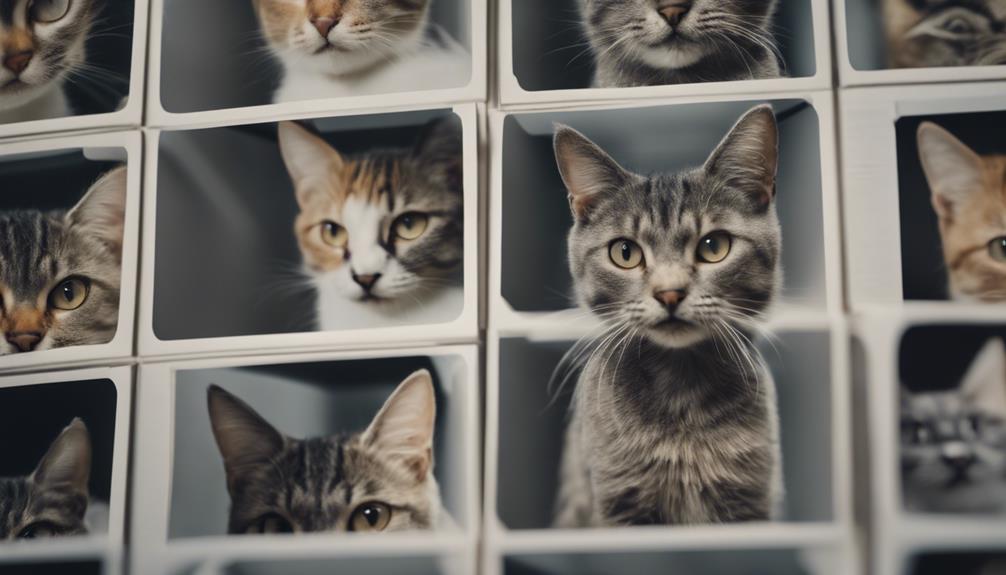
Identification challenges faced by shelters when assisting lost cats can hinder the swift reunification process with their owners. Without visible ID tags, shelters must rely on scanning for microchips, which are not always up-to-date or present in every cat. This can lead to delays in contacting owners, resulting in prolonged stays for the lost felines.
Additionally, shelters often have limited resources and space, making it crucial to quickly identify and reunite cats with their families. By ensuring all cats wear collars with updated ID tags, owners can significantly improve the chances of a speedy reunion if their beloved feline ever goes missing. This simple step can alleviate stress for both the cat and their worried family members.
Benefits of ID Tags for Outdoor Cats
In the realm of outdoor cat safety, the presence of proper identification tags plays a pivotal role in ensuring the well-being and security of these adventurous felines. Outdoor cats are prone to wandering far from home, increasing the risk of getting lost or separated from their owners.
ID tags provide a crucial link back to their families, allowing strangers to easily identify and return them if found. In emergency situations, such as accidents or sudden illnesses, these tags can be lifesaving, ensuring that the cat receives the necessary care promptly.
Information on Cat's ID Tag

Ensuring the inclusion of essential contact details and pertinent information on a cat's ID tag is imperative for facilitating a swift and secure reunion in case of separation. Owner's name, two phone numbers, veterinarian's contact, address or city, and important medical information are key elements to consider.
These details help ensure that anyone finding a lost cat can quickly reach out to the owner or provide necessary medical care if needed. Regularly updating the information on your cat's ID tag is crucial to ensure its accuracy.
Owner's Contact Details on Tag
The owner's contact details are crucial components to include on a cat's ID tag for swift and secure identification in case of separation.
- Owner's name: Provides immediate identification.
- Primary phone number: Direct contact for emergencies.
- Secondary phone number: An alternate contact option.
- Home address: Helps in locating the cat's residence.
- Important medical information: Vital details for the cat's well-being.
Adding Veterinarian's Contact Information
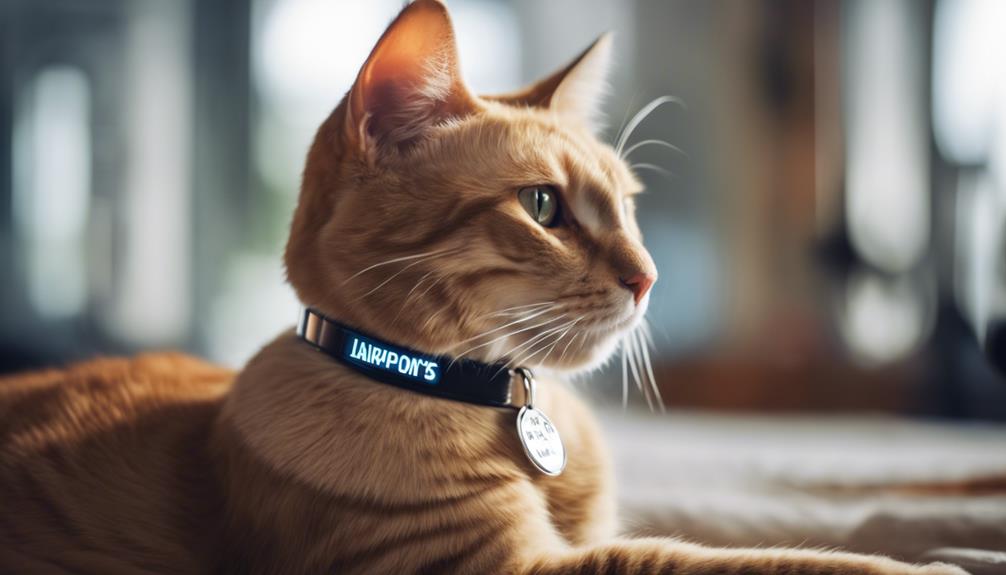
For comprehensive pet identification, incorporating the veterinarian's contact information on a cat's ID tag is a prudent measure to ensure swift and informed assistance in times of need. By including your veterinarian's contact details on the tag, you provide essential information that can aid in reuniting you with your beloved feline companion quickly.
In the event of an emergency or if your cat is found injured, having the veterinarian's information readily available can expedite necessary medical care. This added layer of protection not only reassures you as a pet owner but also ensures that your cat receives the appropriate help promptly.
Remember to keep this information updated on your cat's ID tag to guarantee its relevance at all times.
Including Medical Details on Tag
Including pertinent medical details on a cat's ID tag is a crucial aspect of ensuring their well-being and safety in unforeseen circumstances.
When adding medical information to your cat's ID tag, consider including the following:
- Allergies to specific medications
- Chronic medical conditions such as diabetes or kidney disease
- Emergency contact information for a family member or friend
- Instructions for any necessary medications
- Any recent surgeries or ongoing treatments
Updating Cat's ID Tag Information
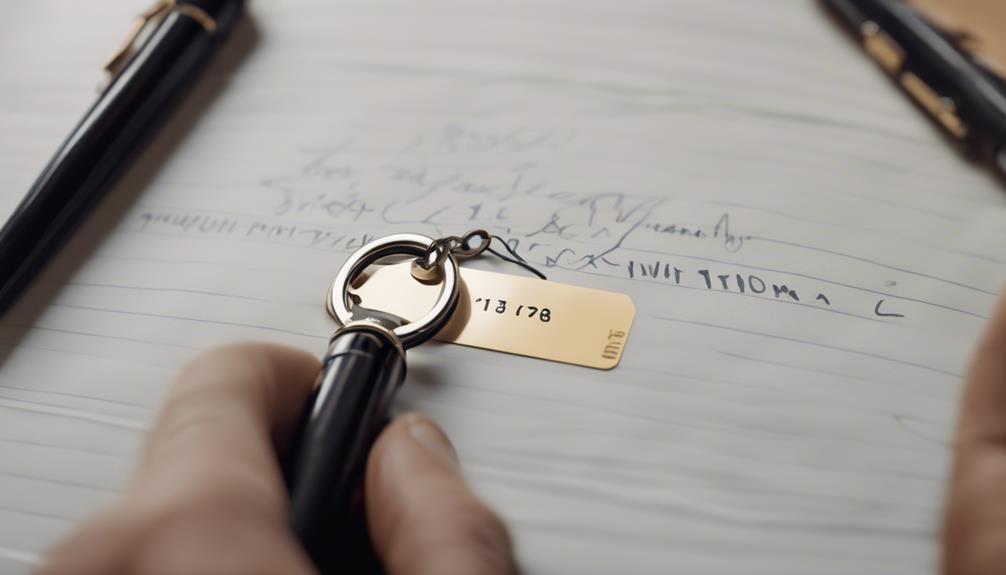
In light of the importance of including medical details on a cat's ID tag for their safety, a crucial next step involves ensuring the timely updating of the cat's ID tag information. Regularly reviewing and updating the contact information, including phone numbers and addresses, is essential to ensure that if your beloved feline friend ever goes missing, they can be swiftly reunited with you.
Additionally, updating any medical information, such as allergies or specific health conditions, can aid in providing appropriate care if your cat is found injured or in distress. By taking the time to keep your cat's ID tag information current, you are taking a proactive step towards safeguarding their well-being and increasing the chances of a safe return home.
Best Collars for Cat Identification
When considering the most effective method for identifying cats, selecting an appropriate collar becomes a critical aspect of pet ownership. Here are some of the best collars for cat identification:
- Personalized collars provide silent identification.
- Breakaway collars are designed to unlatch under pressure.
- They offer an escape route if the cat's collar gets caught.
- Especially important for outdoor cats that may get into tight spots.
- When using breakaway collars, ensure your cat is microchipped for added security.
Importance of Breakaway Collars
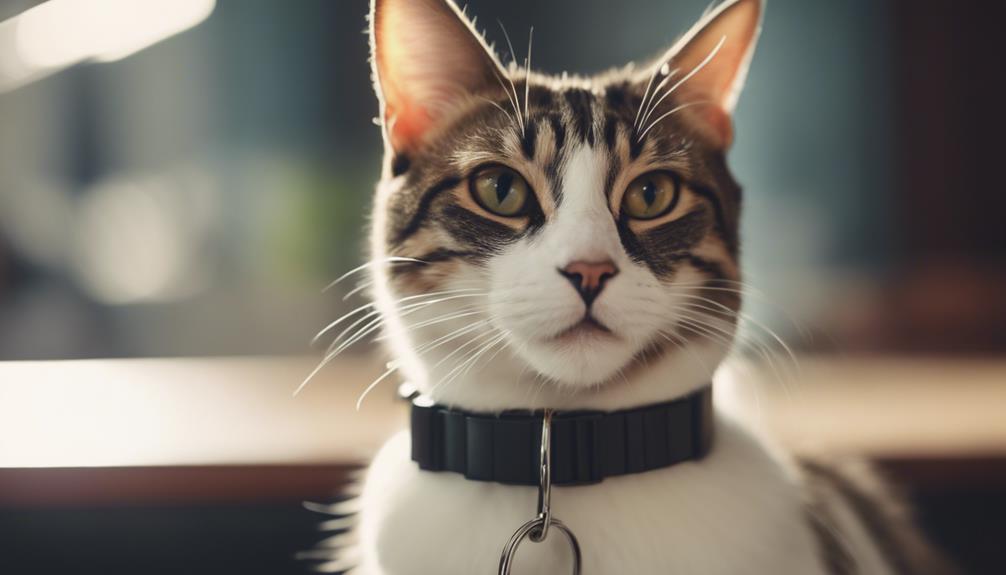
The significance of utilizing breakaway collars for cats cannot be overstated in ensuring their safety and well-being. Breakaway collars are designed to unlatch if tugged with enough force, providing an escape route if the cat's collar gets caught on something. This feature is crucial for cats, especially those that roam outdoors, as it helps prevent accidents and injuries. Additionally, microchipping is recommended for cats wearing breakaway collars to enhance their security further. By incorporating breakaway collars into your cat's daily wear, you can significantly reduce the risks associated with traditional collars.
| Benefits of Breakaway Collars | ||
|---|---|---|
| Prevent Accidents | Ensure Safety | Provide Escape Route |
Conclusion
In conclusion, the necessity of collars and ID tags for indoor cats is paramount, as unforeseen circumstances can put them at risk of being lost. Owners must not underestimate the importance of these identification devices, which serve as crucial tools in reuniting lost felines with their families.
Remember, even the most pampered indoor cats can benefit from the security and peace of mind that collars and ID tags provide.




